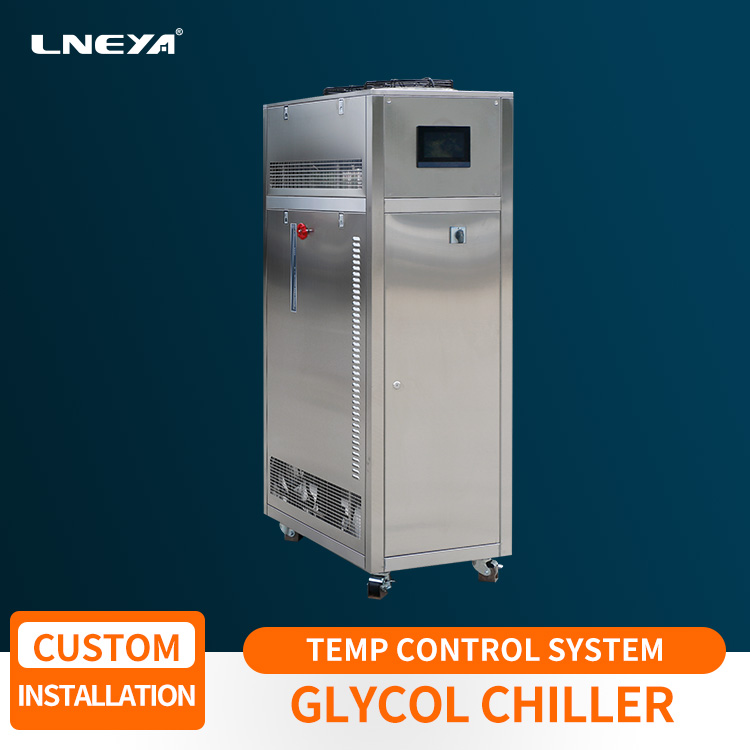How to complete the temperature control equipment for the isolation reactor?
The reactor is a commonly used reactor in pharmaceutical and chemical production. The isolation reactor temperature control equipment is realized by controlling two doors, namely the heating water valve and the cooling water valve. The mixing of the mixer makes the material uniform, improves the heat conduction speed, and Make the temperature uniform. The temperature of the isolation reaction kettle is controlled in the heating stage, open the heating water valve, and pass heating water to the coil in the kettle to increase the temperature of the ridge. The rate of temperature increase is controlled by controlling the valve opening. When heated to the predetermined reaction temperature The heating is stopped, and cooling water is passed through the jacket during the reaction to remove the excess heat generated by the reaction and keep the temperature constant.
The selection of the heat transfer medium for the temperature control of the isolation reactor is determined according to the process temperature requirements of the products of each factory. Common heat transfer media include superheated steam and heat transfer oil. Temperature measurement is usually composed of thermal resistance or thermocouple and its transmitter. The temperature of the heat conduction medium fed into the reactor is required to maintain a constant temperature. By adjusting the flow of the heat conduction medium flowing into the jacket of the reactor, the temperature of the materials in the reactor is controlled to meet the process requirements.
After the temperature control of the isolation reactor is completed, hot water is supplied to the reactor to increase the temperature. The raw materials are fully mixed with the catalyst and absorb the heat provided by the hot water. When the temperature reaches a certain value, the exothermic reaction starts. In this stage, the temperature or pressure in the kettle needs to be raised to the state where the reaction starts in a relatively short period of time, and the continuous temperature rise must be maintained.
The isolation reaction kettle temperature control reaction process is accompanied by a strong exothermic effect, and the relationship between the exothermic rate of the reaction and the reaction temperature is a positive feedback self-excited relationship. This stage is the difficulty of control, which directly affects the quality of the product.
LNEYA isolation reactor temperature control equipment-high and low temperature circulator, compared with dynamic temperature control technology to control the temperature of the heat transfer medium, the temperature of the material is also controlled within the specified range, which improves the work efficiency. The pipeline circulation system improves the power density ratio, reduces the use of heat transfer medium, and saves energy.
Recomendaciones relacionadas
-
New energy shaft cooling chiller
1429New energy shaft cooling does not necessarily require industrial freezers, but is usually achieved using industrial chillers or cooling systems. Industrial freezers are mainly used for extremely low temperature freezing and processing, w...
Ver detalles -
Immersion phase change liquid cooling system
1698What is immersion phase change liquid cooling system?
Ver detalles -
Congelador de temperatura ultrabaja DW de LNEYA
2487Ultra Low Temp Freezer DW Descripción: Congelador de temperatura ultra baja utilizado principalmente para la investigación científica, materiales especiales de prueba y conservación a baja temperatura; congelación de glóbulos rojos, glóbulos blancos, piel, bacterias, semen,...
Ver detalles -
LNEYA obtiene por tercera vez el certificado nacional de empresa de alta tecnología
4484En noviembre de 2021, el Departamento de Ciencia y Tecnología de la Provincia de Jiangsu publicó la "Lista de Registro de Publicidad de Empresas de Alta Tecnología de 2021 en la Provincia de Jiangsu", y LNEYA pasó con éxito la revisión. Es la tercera vez que la empresa...
Ver detalles
 LNEYA Enfriadoras industriales Fabricante Proveedor
LNEYA Enfriadoras industriales Fabricante Proveedor














